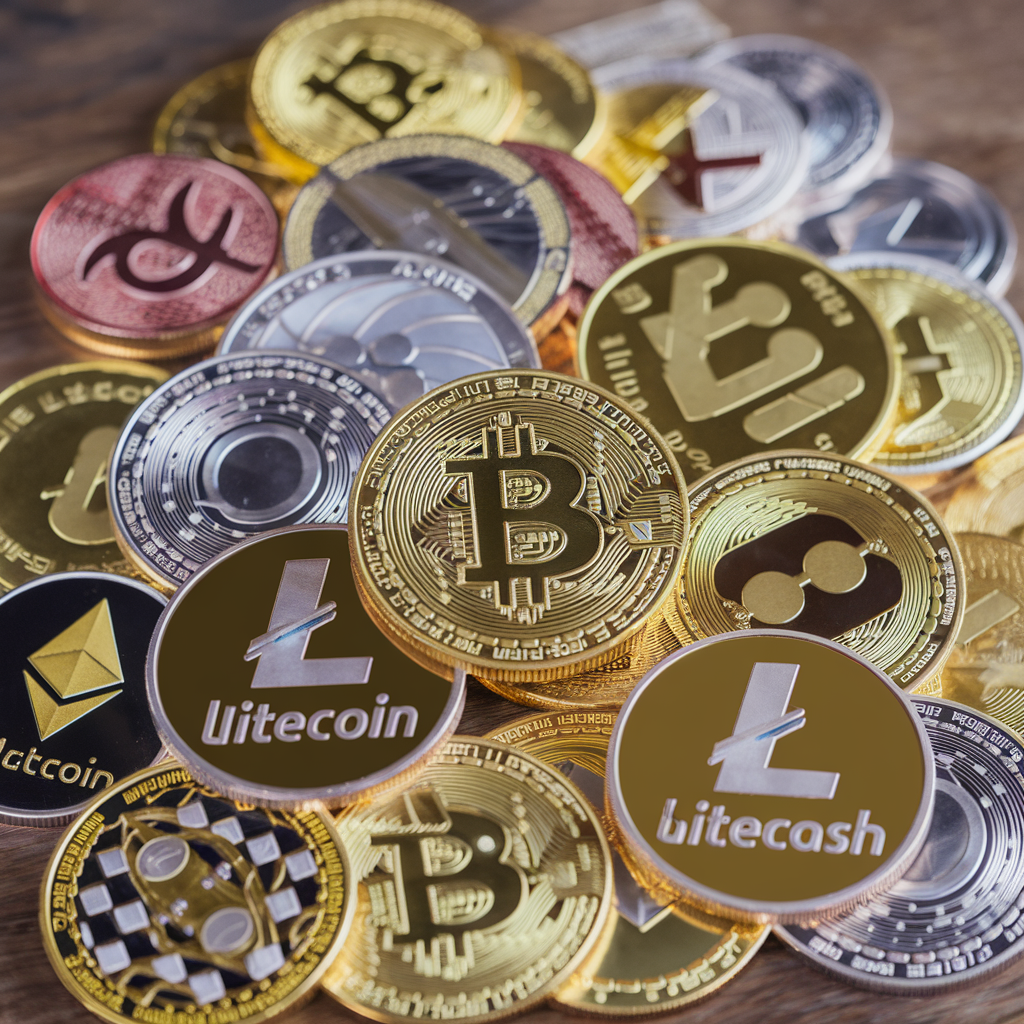The cryptocurrency landscape has grown far beyond the original Bitcoin. With thousands of new coins entering the market, the term “altcoin” has emerged as a catchall for any cryptocurrencies other than Bitcoin. Whether you’re a crypto novice or someone looking to diversify your investment portfolio, understanding altcoins is essential for navigating this complex ecosystem.
This guide will cover everything you need to know about alternative cryptocurrencies, including their origins, categories, and popular use cases. We’ll also explore how to invest in them safely, the risks involved, and what the future might hold for altcoins.
Introduction to Cryptocurrencies and Their Market
Cryptocurrency burst onto the scene in 2009 with Bitcoin, a decentralized digital currency that paved the way for a revolution in how we think about money. Powered by blockchain technology, cryptocurrencies offer a secure, transparent alternative to traditional banking systems. Over time, thousands of other cryptocurrencies, known as altcoins, have emerged, creating a vibrant and highly competitive market.
Today, the cryptocurrency ecosystem is valued at over $1 trillion, with Bitcoin dominating as the most recognized name. However, altcoins have seen tremendous growth in terms of both market share and use cases, drawing interest from investors, developers, and innovators alike.
Definition and Origin of Altcoins
The term “altcoin” stands for “alternative coin.” It refers to any cryptocurrency that isn’t Bitcoin. Altcoins were created to improve upon Bitcoin’s perceived shortcomings or to serve specific niches within the broader blockchain ecosystem.
The first altcoin, Namecoin, was launched in April 2011. Its primary purpose was to provide a decentralized alternative for domain name registration. Since then, the altcoin market has exploded, offering everything from coins with enhanced privacy features to those designed for gaming and virtual worlds.
How Altcoins Differ from Bitcoin
While Bitcoin remains the pioneer and gold standard of cryptocurrencies, altcoins bring additional features and use cases to the table. Here’s how they differ:
- Technology Improvements
Altcoins often aim to improve Bitcoin’s underlying technology. For example, Litecoin processes transactions faster, while Ethereum supports smart contracts. - Specialized Use Cases
Unlike Bitcoin, which is primarily a store of value, many altcoins are tailored to specific use cases. For instance, Ripple (XRP) facilitates fast cross-border payments, and Chainlink (LINK) is used for integrating off-chain data into smart contracts. - Consensus Mechanisms
While Bitcoin uses Proof of Work (PoW) for mining, some altcoins adopt alternatives like Proof of Stake (PoS) or Delegated Proof of Stake (DPoS) for better energy efficiency. - Market Size and Volatility
Altcoins generally have smaller market caps and higher price volatility, presenting both risks and opportunities for investors.
Major Categories of Altcoins
Altcoins can be broadly classified into the following categories:
- Utility Tokens
These coins have specific functions within a platform or ecosystem. For example, Basic Attention Token (BAT) rewards users for attention within the Brave browser. - Stablecoins
Backed by real-world assets like fiat currencies or commodities, stablecoins like Tether (USDT) minimize price volatility, making them ideal for transactions. - Security Tokens
Representing ownership in assets like stocks or real estate, security tokens are regulated differently from other cryptocurrencies. - DeFi Coins
These coins enable decentralized financial activities such as lending, borrowing, and staking. Examples include Aave (AAVE) and Uniswap (UNI). - Privacy Coins
Coins like Monero (XMR) and Zcash (ZEC) provide enhanced privacy features, masking transaction details. - Gaming and Virtual World Coins
Used in blockchain-based games and virtual worlds, coins like Decentraland (MANA) and Axie Infinity (AXS) are rising stars in this niche.
Popular Altcoins and Their Use Cases
Here’s a closer look at some notable altcoins and how they’re being used:
- Ethereum (ETH):
The second-most valuable cryptocurrency by market cap, Ethereum powers decentralized apps (dApps) and smart contracts. - Binance Coin (BNB):
Initially launched to facilitate trading fee discounts on the Binance exchange, BNB now has broader utility within the Binance ecosystem. - Cardano (ADA):
Focused on sustainability and scalability, Cardano supports smart contract functionality. - Polkadot (DOT):
Allows different blockchains to communicate and share data seamlessly. - Dogecoin (DOGE):
Originally created as a joke, Dogecoin has become a favorite for tipping and charitable donations.
How to Invest in Altcoins Safely
While the potential for returns can be enticing, investing in altcoins requires caution. Here’s how to approach it safely:
- Do Your Research
Investigate the altcoin’s purpose, team, and market potential. Reliable platforms like CoinMarketCap and CoinGecko provide key metrics. - Understand the Risks
Altcoins can be highly volatile. Only invest what you’re willing to lose. - Use Reputable Exchanges
Stick to recognized exchanges like Binance, Coinbase, and Kraken for trading and storing your altcoins. - Secure Your Investments
Use hardware wallets like Ledger or Trezor to protect your holdings against hacks. - Diversify Your Portfolio
Don’t put all your eggs in one basket. Spread your investments across multiple altcoins to reduce risk.
Challenges and Risks of Altcoin Trading
Investing in altcoins isn’t without its challenges. Here are some of the key risks:
- Price Volatility: Altcoin markets are prone to sharp price swings, making them risky for conservative investors.
- Scams and Fraud: Some altcoins turn out to be pump-and-dump schemes. Always verify the project’s legitimacy.
- Regulatory Uncertainty: Governments around the world are still defining how cryptocurrencies will be regulated, adding another layer of risk.
- Liquidity Issues: Smaller altcoins may suffer from low liquidity, making it hard to buy or sell them without affecting the price.
The Future of Altcoins within the Cryptocurrency Ecosystem
Altcoins have cemented their place within the cryptocurrency ecosystem, and their future appears bright as blockchain technology matures. Trends to watch include:
- The rise of sustainable and energy-efficient coins as environmental concerns grow.
- Increased adoption of decentralized finance, expanding the use cases for DeFi coins.
- Integration of blockchain technology with real-world assets, benefiting security tokens.
- More robust regulations, potentially increasing investor confidence.
While Bitcoin has dominance, altcoins bring diversity, innovation, and specialized utility to the table. Their role will only grow as the cryptocurrency market continues to evolve.
Investing in Altcoins? Here’s What to Keep in Mind
Whether you’re a novice or an experienced investor, altcoins can be a fascinating addition to your portfolio. However, it’s essential to stay informed and tread cautiously. Always prioritize thorough research and secure investment practices.
Looking for the next big altcoin to add to your collection? Stay up-to-date with market trends, learn about emerging coins, and start diversifying your portfolio today. Happy trading!

